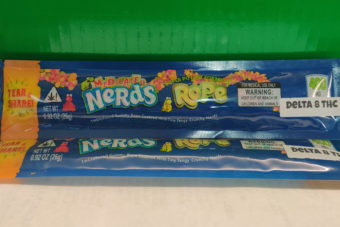
Honey has long been known as a miracle food.
It’s reputation as a healthful healing substance goes back to ancient times. It is one of the world’s richest sources of antioxidants and can be used in a variety of ways. It also contains numerous health benefits both internally and externally.
Now, personally, I love raw honey, no matter where it’s from, but in my experience, I’ve been told that using raw, local honey for allergy protection is always the ideal choice, so we’ll start there.
Some research supports the theory that local honey– obtained as close as possible to where you live–may help build immunity to some seasonal allergies. There is not much research to support this idea, yet many people claim that using honey in this way provides allergy relief. ,,Allergies are triggered by continuous exposure to the same allergen over time. Even if a particular plant is not allergenic initially, it can potentially become very allergenic if you spend much time in the same environment as the plant. Honey made by bees in the vicinity of the allergenic plant will contain tiny amounts of pollen from that plant. This honey will act as a sort of vaccine if taken in small amounts–a few teaspoons per day–for several months, and can provide relief from seasonal pollen-related allergies, according to experts.
Antioxidants, Phytonutrients, Vitamins and Minerals Found in Honey
The “medicinal importance of honey has been documented in the world’s oldest medical literatures, and since the ancient times, it has been known to possess,, antimicrobial property as well as wound-healing activity.
The healing property of honey is due to the fact that it offers antibacterial activity, maintains a moist wound condition, and its high viscosity helps to provide a protective barrier to prevent infection. Its immunomodulatory property is relevant to wound repair too. The antimicrobial activity in most honeys is due to the enzymatic production of hydrogen peroxide,” according to a study called ,,Honey: Its Medicinal Properties and Antibacterial Activities.
Honey is also rich in powerful antioxidants and cancer-fighting phytonutrients, which can be found in the propolis, or “honey glue” that the bees use when sterilizing the beehive.
It is important to note that “raw honey contains some of these compounds while pasteurized honey does not.
The nutrient content of raw honey varies, but a 1-ounce serving contains very small amounts of folate as well as vitamins B2, C, B6, B5 and B3. Minerals including calcium, copper, iodine, iron, magnesium, manganese, phosphorous, potassium, selenium, sodium and zinc can also be found in raw honey in small amounts.

In addition to all the other good honey can do, it’s been found to useful in treating upper respiratory infections, which makes it act as a cough suppressant, and the natural sugar in it can trigger tryptophan to enter our system and have the same effect as eating turkey on Thanksgiving – rest.
And speaking of rest, did you know that some honey experts recommend taking a small amount at night as a sleep aid? Just a small amount, not much at all.
“Have you ever woken up in the middle of the night abruptly by your body? Whether you were strangely hungry or just uncomfortable? There is a pretty big chance that that was your brain waking you up for more fuel! Our liver holds 75-100 grams of glycogen at one time. Per hour, our body consumes 10 grams of that glycogen. For many of us, we tend to eat dinner somewhat early, around 6- 7 p.m, but don’t actually go to bed until around 11 p.m. In the time between eating and actually calling it a night, our body has used up a significant portion of the glycogen we stored from our dinner, leaving less than needed to fuel a good 8 hours of sleep. Halfway through an otherwise great night’s sleep, your brain tells your body “hey, I need more energy” waking you up from that beauty sleep!
The Sleep Solution
A teaspoon of honey before bed is just what the doctor ordered. The sweet liquid will restock the liver with the glycogen needed to prevent the crisis trigger from the brain. Honey’s natural sugars also slightly raise insulin, allowing tryptophan to enter the brain. What is tryptophan? Tryptophan is an amino acid that is turned into niacin, an essential B vitamin. Niacin is a key player in the creation of serotonin, a neurotransmitter needed to produce melatonin and put your body to sleep.There is no extra step needed when it comes to using honey to aid in your sleep. Sure, you can add it to tea, make a little potion, or add some cinnamon, but all you really need is a clean spoon and a jar of raw honey,” advises Beekeeper Naturals.

KRATOM HONEY BALL RECIPE
Using your favorite Beaufort Organics strain, here is a recipe for your very own kratom honey balls!
INGREDIENTS
- Raw, local organic honey
- Your favorite kratom strain from BFT!
- Large mixing bowl
- Spoon
- Parchment paper
DIRECTIONS
- Add 1-3 tsp kratom powder in a bowl
- Add honey and stir
- Place parchment paper on a cutting board
- Placing the balls on parchment paper, shape mixture in small balls or you can even make heart shapes if you’re feeling creative!
- Refrigerate for 3 hours or until hardened
- Remove and enjoy!











